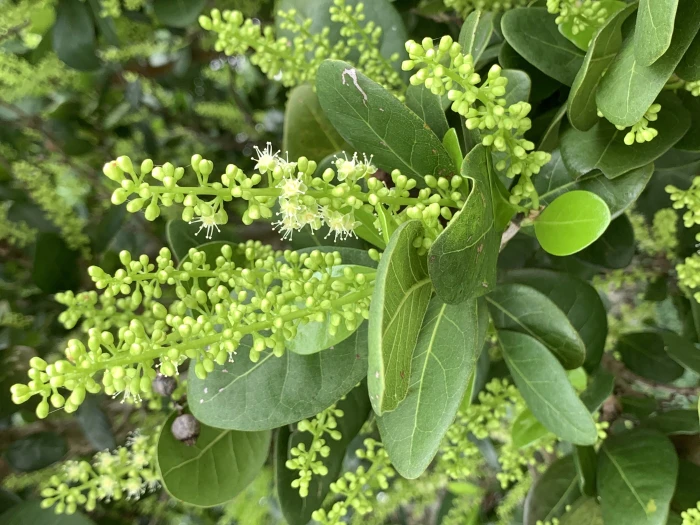Pigeon Plum
(Coccoloba diversifolia)
Pigeon Plum (Coccoloba diversifolia)
/
/

KATHERINE WAGNER-REISS
CC BY-SA 4.0

























































Estimated Native Range
Climate Requirements for Helena, Montana
| This Plant | Your Site | Plant Suitability for Your Location | ||
|---|---|---|---|---|
| • Precipitation | 8" - 169" | 11" | Your precipitation may be insufficient for this plant. Irrigate N" / year. | Irrigate N" / year |
| • High Temp. | 74°F - 98°F | 83°F | Your summer temperatures are normal for this plant. | Excellent |
| • Low Temp. | 20°F - 74°F | 11°F | Your winter temperatures may be too cold for this plant | Too cold |
Summary
Pigeon Plum is valued for its hardiness and adaptability, making it suitable for urban planting, coastal landscaping, and as a windbreak due to its resistance to high winds, salt, and drought. It is also appreciated for its attractive bark and edible fruit. This species requires full sun to part shade and can tolerate a range of water conditions, but prefers well-drained soils. It is not tolerant of hard frost, which limits its use in colder climates. While generally pest-free, it can suffer from root rot in overly wet conditions.CC BY-SA 4.0
Plant Description
- Plant Type: Tree, Shrub
- Height: 15-25 feet
- Width: 20-35 feet
- Growth Rate: Moderate
- Flower Color: N/A
- Flowering Season: Summer
- Leaf Retention: Evergreen
Growth Requirements
- Sun: Full Sun, Part Shade
- Water: High
- Drainage: Fast, Medium, Slow
Common Uses
Bee Garden, Butterfly Garden, Edible*Disclaimer: Easyscape's listed plant edibility is for informational use. Always verify the safety and proper identification of any plant before consumption., Fragrant, Hedges, Low Maintenance, Street Planting
Natural Habitat
Coastal hammocks, maritime forests, and sandy scrub areas
Other Names
Common Names: Tietongue, Pigeon-Plum, Snailseed, Tie-Tongue, Dove-Plum, Barbados Grape Tree, Pigeon Seagrape, Picurero, Uvilla, Guayabillo
Scientific Names: Coccoloba diversifolia, Coccoloba laurifolia, Coccoloba floridana, Coccoloba curtisii, Coccoloba cumbreana, Coccoloba cubensis, Coccoloba lancifolia, Coccoloba oligocarpa, Coccoloba curtisiae
GBIF Accepted Name: Coccoloba diversifolia Jacq.